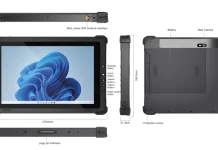Introduction:
Air travel has become an integral part of our globalized world, connecting people and cultures like never before. As the aviation industry continues to soar, the demand for efficient and reliable airport transportation has never been higher. This article delves into the evolution of airport transportation, exploring the various modes of travel that facilitate seamless journeys from home to the departure gate.
- Ground Transportation to Airports:a. Personal Vehicles:The most common form of airport transportation is personal vehicles. Whether it’s a taxi, rideshare service, or private car, passengers often opt for the convenience of driving to the airport. On-site parking facilities cater to those who prefer the flexibility of their own schedule.b. Shuttle Services:Many airports offer shuttle services connecting key locations in the city to the airport terminals. These cost-effective options provide a shared ride experience, reducing individual carbon footprints and easing traffic congestion.
- Public Transportation:a. Buses and Trains:Public buses and trains are crucial components of airport transportation infrastructure. Connecting urban centers to airports, these services provide an economical and eco-friendly option for travelers. Dedicated airport express services have become increasingly popular, ensuring swift and direct routes.
- Technological Advancements:a. Rideshare Services:The rise of rideshare services, such as Uber and Lyft, has transformed airport transportation. Offering door-to-door convenience, rideshares have become a preferred choice for many travelers. Airports worldwide have designated pick-up and drop-off points to streamline the process.b. Mobile Apps and Online Booking:Technological advancements have allowed for seamless booking experiences. Passengers can now book various transportation services through mobile apps, reducing wait times and enhancing overall travel efficiency.
- Airport Shuttle Systems:a. Intra-Airport Shuttles:Larger airports often feature internal shuttle systems to transport passengers between terminals, parking lots, and other key points within the airport complex. These systems contribute to smoother connections for travelers with connecting flights.
- Future Trends in Airport Transportation:a. Autonomous Vehicles:The future of airport transportation may see the integration of autonomous vehicles. Self-driving shuttles and taxis could enhance safety, reduce traffic congestion, and offer a more predictable travel experience.b. Sustainable Practices:With an increasing focus on environmental sustainability, airports are exploring greener transportation options. Electric shuttles, hydrogen-powered vehicles, and other eco-friendly solutions are being considered to minimize the environmental impact of airport transportation.
- Challenges and Solutions:a. Traffic Congestion:As air travel continues to grow, so does the challenge of traffic congestion around airports. Collaborative efforts between transportation authorities, airport operators, and local governments are essential to developing effective solutions, such as improved road infrastructure and public transportation options.b. Security and Safety:Security and safety concerns are paramount in airport transportation. Robust measures, including background checks for drivers and enhanced vehicle inspection protocols, are vital to ensuring the well-being of passengers.






















![InstaPro APK Download Latest Version 2023 [Anti Ban]](https://olo.my.id/wp-content/uploads/2023/10/instapro-100x70.jpg)